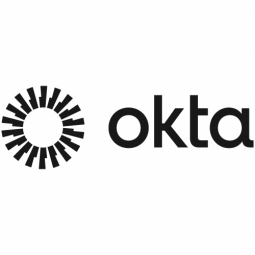Customer Company Size
Large Corporate
Country
- United States
Product
- Okta Single Sign-On
- Okta Identity Cloud
- Okta Authentication
- Okta API Access Management
- Okta Multi-Factor Authentication
Tech Stack
- OpenID Connect
- SAML
- OAuth
- API Tokens
Implementation Scale
- Enterprise-wide Deployment
Impact Metrics
- Productivity Improvements
- Cost Savings
- Customer Satisfaction
- Digital Expertise
Technology Category
- Cybersecurity & Privacy - Identity & Authentication Management
- Platform as a Service (PaaS) - Connectivity Platforms
- Application Infrastructure & Middleware - API Integration & Management
Applicable Industries
- Finance & Insurance
- Professional Service
Applicable Functions
- Business Operation
- Quality Assurance
Services
- System Integration
- Cloud Planning, Design & Implementation Services
- Software Design & Engineering Services
About The Customer
Verisk Analytics is a leading data analytics provider that serves customers in insurance, energy, and specialized markets, as well as financial services. The company offers predictive analytics and decision-support solutions to professionals in various fields, including fraud prevention and weather risk assessment. With a presence in 30 countries and nearly 10,000 employees, Verisk operates through dozens of subsidiaries and business units. Despite being part of the larger Verisk family, these member companies enjoy significant autonomy, which sometimes leads to challenges in managing responsibilities. Verisk's growth through acquisitions has resulted in a complex IT infrastructure that is difficult and costly to maintain.
The Challenge
Verisk Analytics, a data analytics provider with numerous subsidiaries, faced challenges due to its complex IT infrastructure, which was expensive to maintain and difficult to update. The organization aimed to create a more convenient user experience and improve security for both employees and customers. The rapid growth driven by acquisitions resulted in a highly complex IT environment, making it difficult to maintain individual branding and access shared services. Verisk needed a solution to unify its technology and improve the customer experience, as well as to manage access across its complex ecosystem and support its cloud-first vision.
The Solution
Verisk Analytics partnered with Okta to implement a unified identity solution that would streamline access across its complex ecosystem. The company adopted Okta's Single Sign-On (SSO) to secure internal SaaS solutions, starting with ServiceNow and Office 365, allowing employees to access over 500 applications with a single set of credentials. Verisk also extended its partnership with Okta by purchasing additional CIAM products, including Authentication, Authorization, Multi-Factor Authentication, Lifecycle Management, and API Access Management. The organization engaged Okta's Customer First team and Professional Services to support the implementation. Verisk's modernization initiative included integrating a new customer-facing tenant with its pre-existing workforce tenant, streamlining provisioning, and establishing a core set of APIs. The company also focused on improving security by assigning role-based access to applications and solutions. Verisk's member company, Wood Mackenzie, played a significant role in the deployment strategy, building its own CIAM platform around Okta and creating a repeatable template for other member companies.
Operational Impact
Quantitative Benefit

Case Study missing?
Start adding your own!
Register with your work email and create a new case study profile for your business.
Related Case Studies.

Case Study
Real-time In-vehicle Monitoring
The telematic solution provides this vital premium-adjusting information. The solution also helps detect and deter vehicle or trailer theft – as soon as a theft occurs, monitoring personnel can alert the appropriate authorities, providing an exact location.“With more and more insurance companies and major fleet operators interested in monitoring driver behaviour on the grounds of road safety, efficient logistics and costs, the market for this type of device and associated e-business services is growing rapidly within Italy and the rest of Europe,” says Franco.“The insurance companies are especially interested in the pay-per-use and pay-as-you-drive applications while other organisations employ the technology for road user charging.”“One million vehicles in Italy currently carry such devices and forecasts indicate that the European market will increase tenfold by 2014.However, for our technology to work effectively, we needed a highly reliable wireless data network to carry the information between the vehicles and monitoring stations.”

Case Study
Safety First with Folksam
The competitiveness of the car insurance market is driving UBI growth as a means for insurance companies to differentiate their customer propositions as well as improving operational efficiency. An insurance model - usage-based insurance ("UBI") - offers possibilities for insurers to do more efficient market segmentation and accurate risk assessment and pricing. Insurers require an IoT solution for the purpose of data collection and performance analysis

Case Study
Smooth Transition to Energy Savings
The building was equipped with four end-of-life Trane water cooled chillers, located in the basement. Johnson Controls installed four York water cooled centrifugal chillers with unit mounted variable speed drives and a total installed cooling capacity of 6,8 MW. Each chiller has a capacity of 1,6 MW (variable to 1.9MW depending upon condenser water temperatures). Johnson Controls needed to design the equipment in such way that it would fit the dimensional constraints of the existing plant area and plant access route but also the specific performance requirements of the client. Morgan Stanley required the chiller plant to match the building load profile, turn down to match the low load requirement when needed and provide an improvement in the Energy Efficiency Ratio across the entire operating range. Other requirements were a reduction in the chiller noise level to improve the working environment in the plant room and a wide operating envelope coupled with intelligent controls to allow possible variation in both flow rate and temperature. The latter was needed to leverage increased capacity from a reduced number of machines during the different installation phases and allow future enhancement to a variable primary flow system.

Case Study
Automated Pallet Labeling Solution for SPR Packaging
SPR Packaging, an American supplier of packaging solutions, was in search of an automated pallet labeling solution that could meet their immediate and future needs. They aimed to equip their lines with automatic printer applicators, but also required a solution that could interface with their accounting software. The challenge was to find a system that could read a 2D code on pallets at the stretch wrapper, track the pallet, and flag any pallets with unread barcodes for inspection. The pallets could be single or double stacked, and the system needed to be able to differentiate between the two. SPR Packaging sought a system integrator with extensive experience in advanced printing and tracking solutions to provide a complete traceability system.

Case Study
Transforming insurance pricing while improving driver safety
The Internet of Things (IoT) is revolutionizing the car insurance industry on a scale not seen since the introduction of the car itself. For decades, premiums have been calculated using proxy-based risk assessment models and historical data. Today, a growing number of innovative companies such as Quebec-based Industrielle Alliance are moving to usage-based insurance (UBI) models, driven by the advancement of telematics technologies and smart tracking devices.
Case Study
Enhancing Security and Compliance in Remitly's Global Money Transfer Service with Fastly
Remitly, an online remittance service, was faced with the challenge of securing its proprietary global transfer network. The company needed a security solution that could meet PCI requirements and protect customers' sensitive transactions through its mobile application. The solution had to be capable of defending against new and emerging attack types without impacting performance. Remitly also had to deal with irregular traffic patterns, such as a sudden spike in account transfers from a small network segment on the Pacific coastline of South America. The company needed to determine in real time whether such traffic indicated an attack or valid requests. A traditional web application firewall (WAF) would not be able to distinguish this traffic, potentially leading to customer frustration if the IP was blacklisted.







